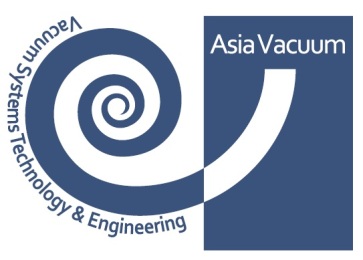[fsn_row][fsn_column width=”12″][fsn_text]
Oil or rotary vacuum pump
Both pumps are rotary, but the first uses a rotor and several blades, and the second uses a rotating cylindrical piston. The performance of these two pumps is similar, with the difference that in Rotary Vienna, the distance between the mechanical parts is less and as a result, the final vacuum pressure is higher. This pump is made in one to several stages. Graphite blades are used in drywind rotary. This pump is used in pharmaceutical and chemical industries and in cases where water and oil vapors should not be in the system. The final pressure of the dry rotary vacuum is up to 80 mm. The rotary pump can be used as a backup pump for Roots, diffusion and turbomolecular pumps, and by combining this pump with pumps such as Roots, lower pressures can be achieved.
Gas Ballast in Oil Vacuum Pumps or Rotary Vane (Oil Vacuum)
Before explaining about Gas Ballast, it is necessary to briefly describe the vacuum and the need to create a vacuum, and then about one of the types of vacuum pumps. The atmosphere around the earth puts pressure on the surface of all the earth’s bodies, which scientists have measured in the past in the open sea, a place that has no height, and have determined its value in different units, which are: 1013 mbar or 760 mmHg . In industries for most processes or products such as: chemical, pharmaceutical, electronics, food, coating, nanotechnology, accelerators, high-tech…. This atmospheric pressure must be reduced to a certain amount in order to make those processes possible.
Features of oil vacuum pump
Design and manufacture in two types of one-stage oil vacuum pumps and two-stage oil vacuum without the need for lubrication. Output climate without oil, very low noise and without vibration in oil vacuum pumps. Combination of vacuum pump with Rotary Vane type) designed for continuous working conditions without stopping the use of mechanical seals in two-stage oil vacuum pumps, no contact between the internal components of the pump and high mechanical efficiency and service life of oil vacuum pumps.
Uses of oil vacuum pump
To create a vacuum in condensing, aeration and filtration systems in the sugar industry Dehydration of asbestos paste Central suction system in hospitals Filtration, flotation, concentrate and vacuum casting in the metal industry and mines Ventilation pumps with NPSH in low distillation water and wastewater Products, filtration, replacement of steam injectors, creating vacuum and aeration in various processes in the oil and petrochemical industry, vacuum condenser, steam turbines and aeration of water in power plants
Design and construction of oil vacuum pump
Oil vacuum pumps consist of two main parts: rotor (shaft and impeller) and body (cylinders and cylinders), which has a high efficiency quality at the same time as a simple operating mechanism. The parts of the pumps are of high quality and their machining operations are done according to DIN and ISO standards with precision up to one hundredth of a millimeter, which minimizes internal leakage and increases the efficiency of the device. The rotor of the pumps is dynamically balanced by computer equipment, which eliminates dynamic vibrations. Each machine is fully tested in terms of capacity, pressure, vacuum, power consumption and different efficiencies, and all parts in the stages of input, machining, manufacturing, assembly and final delivery are 100% controlled by the factory QC department.
Mechanism of operation of oil vacuum pump
The rotational and eccentric movement of the impeller around the pump shaft inside the cylinder containing the service fluid, which is usually water (other fluids such as oils and organic fluids can also be used) causes the liquid ring to form. In the direction of rotation, with the continuous entry and exit of the vanes inside the service fluid, the closed volume of the space between the two cylinder heads, both vanes and the inner wall of the liquid ring increases on one side (suction area) and suction is performed on the side. The other is reduced (dashes area) and the compaction operation is performed. The cooling operation of the oil vacuum pump is performed by the service liquid and the condensation of liquid particles along with the outlet air and its return to the pump can be used, which results in cooling the pump and stabilizing the temperature of the compression operation as isothermal (Iso- thermal) takes place.
Asia Vacuum Pump Industries
[/fsn_text][/fsn_column][/fsn_row]
